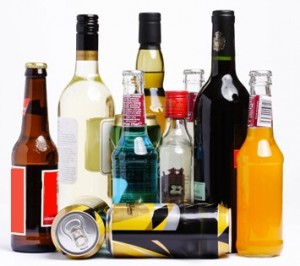 Classification: Sedative Hypnotic
Classification: Sedative Hypnotic
Common Names/Nicknames: Booze, brew, hooch, juice, mouthwash, sauce
Active Compound: Ethanol
Found in: Beer, wine, liquor, malted beverages
Mode of Consumption: Ingestion
DEA Scheduling/Legal Status (in US): Unscheduled. Legal over age 21. Drunken limit of 0.08% blood alcohol concentration (BAC).
Effects:
Low doses: impaired judgment, euphoria, stimulation, relaxation, decreased inhibitions
High doses: loss of coordination, memory impairment, drowsiness, slurred speech, nausea/vomiting, sexual dysfunction, coma, fatal overdose
Risks:
Acute: Hangover, accidental injury, blackouts, coma, fatal overdose
Chronic: Addiction, liver damage and failure, kidney damage, pancreatic damage, permanent neurological impairment, increased risk of cardiovascular disease, increased risk of multi-organ cancer
Dangerous Drug Combinations:
Potentially fatal mix with acetaminophen/paracetamol (Brand names: Tylenol, Triaminic, Panadol), opiates, benzodiazepines, and other depressants. Dangerous combination with cold remedies and antidepressants.
Special Considerations:
Extreme alcohol withdrawal can prove to be fatal.
And remember, if somebody may need help, play it safe and call for medical assistance.
“Students may bring an intoxicated or drug-impaired friend to University Health Services or to a hospital, or seek assistance from College residential life staff or HUPD, and by doing this, neither they nor the friend will face disciplinary action from the College for having used or provided alcohol or drugs.”
The Amnesty Policy
Harvard College Student Handbook
Sources:
Buzzed: The Straight Facts About the Most Used and Abused Drugs from Alcohol to Ecstasy (Third Edition), by Cynthia Kuhn, Scott Swartzwelder, and Wilkie Wilson. Published 2008 by W. W. Norton & Company.
National Institute on Drug Abuse (NIDA), part of the National Institute of Health (NIH) of the U.S. Department of Health and Human Services.
http://www.nida.nih.gov/DrugPages/
U.S. Drug Enforcement Agency (DEA), part of the U.S. Department of Justice.
Erowid Organization

